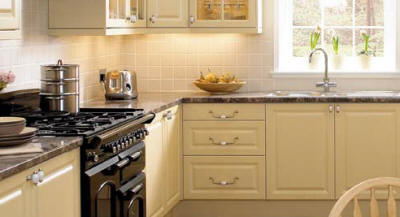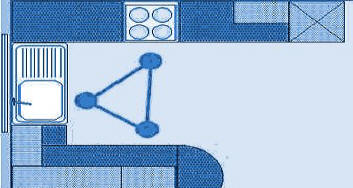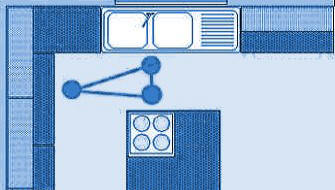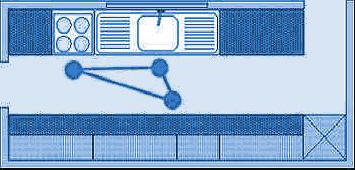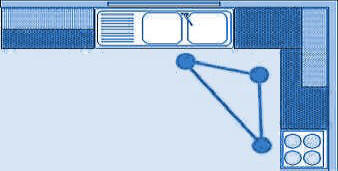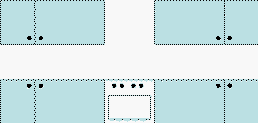|
Your online resource for all things culinary |
|
||||||||||
|
|||||||||||
|
|||||||||||
| Â | |||||||||||
|
|||||||||||
|
In general, try to have at least 100cm/3ft work top on one or both sides of the cooker/hob and sink unit. Where space is limited, this may not always be possible in which case the sink drainer can be counter as a "work top". Hobs should have a minimum of 100cm/3ft work surface space on at least one side - preferably both. In a very small kitchen, if necessary the draining board can count as the work surface. Do not place directly under wall cupboards. Cooker Hoods should be placed directly over the hob at a height recommended by the manufacturer. Ovens should not be placed directly next to the fridge or freezer as the heat generated can affect the performance of them. Fridges and freezers are best not placed directly against a wall on the hinge side of the appliance to ensure the doors can open freely. As mentioned above, try not to place them directly next to a heat source such as an oven or hob as this can affect their running efficiency. Under-counter types should have a clear work top above. Dishwashers should be placed as near to the sink unit/draining board as possible so that crockery can be stacked and rinsed off easily. Microwave Ovens should be placed within the triangle if at all possible. Small Electrical Appliances such as kettles, toasters and coffee makers should be placed near to wall sockets to avoid the need for long extension cables. Items which may not be used on a daily basis such as food mixers and breadmakers, can be either stored in a cupboard or kept on a work surface outside of the triangle. FlooringAvoid carpeting, especially in the prep and cooking areas where spills are inevitable. Choose tiles or vinyl flooring which are easy to clean with a mop and detergent and which can be easily disinfected. Where possible tile or lay the complete kitchen before any floor cupboards have been fitted. The extra cost will be negligible compared to the amount of time and effort it takes to cut around units. It will also make moving free standing appliances easier with less likelihood of damaging the flooring. Kitchen CupboardsYou can never have enough storage space in a kitchen especially with today's myriad of kitchen gadgets and tools, plus the wide range of store-cupboard foods, cleaning equipment and detergents - not to mention pots, pans and crockery. It's far better to have too many cupboards - if that is possible - so make full use of spare floor and wall space. Before choosing cupboards, apart from the general style which is a matter of personal choice, try to find a range which offers extra features such as in-built storage racks and waste bins. Think very carefully before mixing high-line floor cupboards with drawer-line cupboards as the end result may look untidy and unmatched. However, if you choose high-line floor cupboards i.e. cupboards with no drawers, make sure you include at least one full drawer unit which makes the storage of utensils and cutlery much easier.
Items should be stored as close to where they will be used as possible. So, for example, keep the cupboard under the sink for detergents and cleaning equipment and the cupboard(s) nearest to the oven/hob for pots and pans. LightingThere is nothing more dangerous than trying to cook or prepare food with sharp knives in poor lighting conditions. One of the most effective forms of lighting is the long strip ceiling type, however, spotlight fittings can also be used very effectively to light separate areas especially if trained on particularly dark areas. Alternatively, do consider under-wall-cupboard lighting especially if your kitchen is on the dark side. It is worth every penny to get a qualified electrician in to fit new lighting. VentilationOpening a window to let out steam and heat is fine in summer, but on cold winter days when cooking methods tend to be longer, one might be put off letting all that cold air into the house. A cooker hood (extractor) is well worth the expense but in any event, if possible try to include a large extractor fan in an outside wall which will remove excess moisture when steaming or boiling preventing a build up of condensation. At the very least, an air vent should be fitted to an outside wall.  |
|||||||||||
Â
|
|||||||||||
| Â | |||||||||||

